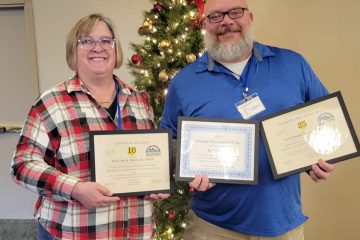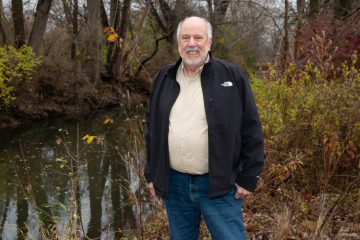The U.S. Department of Agriculture (USDA) announced the launch of a new Working Lands for Wildlife (WLFW) conservation effort – the Northern Bobwhite Pilot Project, which offers agricultural producers and landowners the tools to conserve wildlife habitat for northern bobwhite quail by improving East-Central grasslands while achieving other critical conservation benefits, including sequestering carbon and improving water quality and soil health.
“The USDA has a long track record of fostering and supporting the vital relationship between agriculture and conservation, and the new Northern Bobwhite Pilot Project helps our producers be good stewards of their lands and boost wildlife populations at the same time,” said Tammy Willis, NRCS State Conservationist in Illinois. “These efforts demonstrate the power of USDA’s Farm Bill conservation programs to conserve wildlife habitat, protect clean water and address climate change in partnership with farmers, ranchers, forest owners and conservation organizations across the country.”
The Northern Bobwhite Pilot Project, offered by the Natural Resources Conservation Service (NRCS) through Working Lands for Wildlife, provided dedicated funding of $13 million — for fiscal year 2024 — in new assistance through the Environmental Quality Incentives Program. This is for producers to help the bobwhite and other game and non-game species by managing their working lands for early successional habitat while meeting their lands natural resource and production goals.
This new pilot includes funding to support producers in Alabama, Arkansas, Florida, Georgia, Illinois, Iowa, Kansas, Minnesota, Mississippi, Missouri, Nebraska, Ohio, Oklahoma, South Carolina, Tennessee, Texas, Virginia and West Virginia.
NRCS accepts applications year-round for EQIP. Interested producers in Illinois should contact or visit their local USDA Service Center to enroll. Find your local service center at https://www.nrcs.usda.gov/conservation-basics/conservation-by-state/illinois#contact to start.
The Northern Bobwhite Pilot Project supports the 5-year, 7-million-acre goal of the Working Lands for Wildlife Northern Bobwhite, Grasslands and Savannas Framework for Conservation Action unveiled in 2022 by USDA. Recently, NRCS expanded the Climate- Smart Agriculture and Forestry Mitigation Activities that qualify for funding through the Inflation Reduction Act. Those funds will also be critical to Working Lands for Wildlife’s success in reaching its long-term goals.
The Northern Bobwhite Pilot Project advances USDA’s efforts in climate-smart agriculture with almost 20 climate-smart practices being deployed voluntarily on private lands, including field borders, brush management, tillage management, prescribed burning, prescribed grazing, forest stand improvement and herbaceous weed treatment. More than 17 conservation practices that support climate smart mitigation are included in the Northern Bobwhite Pilot Project.
New ‘Bobscapes’ App
NRCS and Quail Forever are also supporting northern bobwhite conservation with a new “Bobscapes” mobile app for citizen science reporting that will help researchers better understand population dynamics and help managers direct resources for habitat work where those investments will be most effective in recovering the species. Additionally, for those interested, the app will connect landowners to technical experts who can make habitat recommendations and share information on voluntary cost share programs. Bobscapes reporting adheres to protection of personally identifiable information for citizens and for bobwhite locations. Lastly, the data provided will assist wildlife biologists in creating a national habitat network of “Bobwhite landscapes” necessary to ensure this species persists for future generations.
More Information
Producers and landowners interested in the Northern Bobwhite Pilot Project should contact NRCS at their local USDA Service Center to sign up now.
USDA touches the lives of all Americans each day in so many positive ways. Under the Biden-Harris administration, USDA is transforming America’s food system with a greater focus on more resilient local and regional food production, fairer markets for all producers, ensuring access to safe, healthy and nutritious food in all communities, building new markets and streams of income for farmers and producers using climate smart food and forestry practices, making historic investments in infrastructure and clean energy capabilities in rural America, and committing to equity across the Department by removing systemic barriers and building a workforce more representative of America. To learn more, visit nrcs.usda.gov/conservation-basics/conservation-by-state/illinois.


